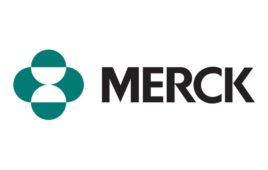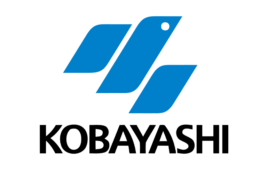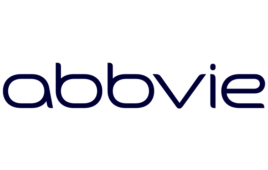Pharmaceutical trademark clearance is an extremely complex and challenging process in the United States. Few industries face such formidable obstacles with respect to branding a product. These hurdles are due primarily to the dual nature of pharmaceutical trademark clearance, which consists of both a legal and regulatory review. While a pharmaceutical trademark can be deemed available for registration with the U.S. Patent and Trademark Office (USPTO), it is much more difficult to determine whether or not a pharmaceutical trademark is ultimately available for use in the marketplace.
In most industries in the United States, the trademark clearance process is almost solely legally oriented. A company will create a list of potential product names, possibly conduct initial trademark screening searches, and then have a trademark attorney conduct a full trademark clearance search and provide a legal opinion as to a trademark’s potential availability for use and registration in connection with a particular product (or service in the case of service marks). End of story.
For pharmaceutical trademarks the story continues, and for good reason – name safety. While most pharmaceutical companies naturally want good brands for their products, consumer safety is the top concern in an industry where likelihood of confusion can have potential dire consequences. Accordingly, pharmaceutical trademarks are subject to high levels of government scrutiny with respect to approval, use and advertising.
Pharmaceutical trademark professionals in the United States know that securing a trademark registration for a brand is only half the battle. They also know that a pharmaceutical trademark, regardless of whether it is registered or pending, is not available for use until the U.S. Food and Drug Administration (FDA) approves it. Further complicating matters is that the FDA review is independent of the USPTO review and has a completely different focus. As a result, the pharmaceutical clearance process requires a different approach and trademark attorneys need specific, specialized information in order to support pharmaceutical trademark legal opinions with respect to use.
Many trademark attorneys that specialize in pharmaceutical trademark clearance adopt a two-pronged approach to clearance. In addition to knowing the “ins and outs” of the USPTO examination process, they make it their business to understand regulatory factors that impact the FDA approval process of pharmaceutical trademarks. It’s no surprise that practitioners new to pharmaceutical trademark clearance consider it relatively arcane.
The pharmaceutical trademark clearance process begins relatively early in the pharmaceutical development cycle. Typically, a branding concept is conceived by pharmaceutical branding specialists and then a large pool of potential brand name candidates are subsequently submitted for consideration by a pharmaceutical company’s marketing or trademark development department. Next, the surviving candidates are typically prioritized and forwarded to the company’s trademark legal department or law firm for initial screening in order to weed out potentially problematic candidates.
Trademark preliminary screening searches in the pharmaceutical industry can be extremely rigorous. Trademark candidates are often screened for obvious show-stoppers first by pharmaceutical branding specialists and then again by a trademark legal department or law firm. Preliminary screening efforts are usually global in nature and virtually all major pharmaceutical companies desire a global brand that can be used around the world.
Preliminary pharmaceutical trademark screening searches are most often conducted using commercial online trademark database platforms by skilled trademark researchers, trademark paralegals and trademark attorneys. Because global availability is desirable, it is important to screen a candidate in as many key jurisdictions as possible. This provides a snapshot of how robust a trademark candidate might be on a global scale.
Pharmaceutical screens are typically not simple “knock-out” searches. More often than not, practitioners tend to screen pharmaceutical trademark candidates very thoroughly and deeply so as not to allow potentially compromised candidates to progress to the full search stage. Only a small percentage of the original candidates survive the pharmaceutical trademark screening process. Surviving candidates proceed on to the final stage of trademark legal clearance– the U.S. full pharmaceutical trademark availability search. This complex search is usually done prior to filing a trademark application and serves to support a trademark attorney’s legal assessment as to a potential trademark’s availability in connection with use and registration.
U.S. full pharmaceutical trademark clearance searches should address both trademark legal issues and FDA regulatory issues. While a pharmaceutical trademark search will never obviate the need for specialized safety and regulatory analysis that is currently employed by the pharmaceutical industry, a specialized trademark research report designed specifically to address pharmaceutical industry clearance issues can greatly assist a trademark attorney in formulating a well supported opinion on availability of a pharmaceutical trademark.
Much like a typical trademark search, which often mirrors the USPTO examination process, a full pharmaceutical trademark availability search should likewise attempt to mirror the FDA review process. In order to do this, a good pharmaceutical search should have a name safety component and include a selection of sources that are reviewed by the FDA, such as the Orange Book (FDA approved drugs), USAN Names (generic drug names) and other FDA relevant information. It should also include information derived using known FDA methods, such as the FDA’s Phonetic and Orthographic Computer Analysis algorithm (POCA).
Indeed, one of the most exciting new advancements in pharmaceutical trademark clearance in the U.S. is the application of the POCA comparison algorithm to the pharmaceutical trademark clearance process. POCA is a sophisticated analytical tool used by the FDA to assist in identifying pharmaceutical names that are phonetically and orthographically similar to the proposed name being reviewed. POCA employs a unique numeric ranking system to assign a similarity score to marks that the algorithm deems comparatively similar within a defined threshold. Relevancy ranking is currently a foreign concept in the trademark legal industry, as assigning numeric weight to potentially conflicting citations based on objective computer analysis is currently avant-garde. The good news is that the addition of POCA to the clearance process allows trademark attorneys to see more of what the FDA sees in its review process, and this will allow practitioners to better predict whether the FDA may approve or reject a proposed pharmaceutical brand name.
In terms of process, a U.S. full pharmaceutical trademark availability search should be conducted by a reputable search firm that specializes in industry-specific trademark clearance research. Researchers in such search firms benefit from specialized training programs that focus on pharmaceutical trademark issues. In addition to conducting the usual tests of trademark legal searching, these specialized researchers will consider name safety and regulatory factors. Such factors might include taking into consideration a potentially conflicting product’s form (e.g. capsule, injection or cream), route (e.g. oral, intravenous, topical), dosage strength, frequency and therapeutic indication.
Many trademark professionals describe trademark searching as more of an art than a science. Pharmaceutical trademark researchers know that they must shift their approach significantly when researching pharmaceutical trademarks. Searching infixes, suffixes, prefixes, letter replacements and checking the cadence of the mark are just some of the methods that researchers use when researching trademarks. Researchers who prepare pharmaceutical trademark research reports must also apply their understanding of FDA regulatory factors in order to create an appropriate body of research that will support a trademark practitioner’s clearance analysis.
Most importantly, pharmaceutical trademark researchers should demonstrate an understanding of both the pharmaceutical brand development process and the significance of pharmaceutical name safety and regulatory data in their compiled research. As the industry responds to new pharmaceutical trademark research tools and content, new techniques and approaches to searching and clearing trademarks will emerge and evolve dynamically. Researchers are currently assessing information from an ever-increasing number of data sources in an effort to cater to the pharmaceutical industry workflow and information needs. The amount of information and content reviewed is expected to increase in the future, and this will increase the demand for well-designed information analysis tools.
Pharmaceutical trademark clearance research is challenging and labor intensive process that requires special consideration and handling. It is important to understand that the USPTO is not the only checkpoint for pharmaceutical trademarks. Trademark legal professionals must be able and ready to adopt a new paradigm that incorporates both legal to regulatory approaches in order to arrive at well-informed clearance determinations with respect to use of a pharmaceutical trademark in the United States.




